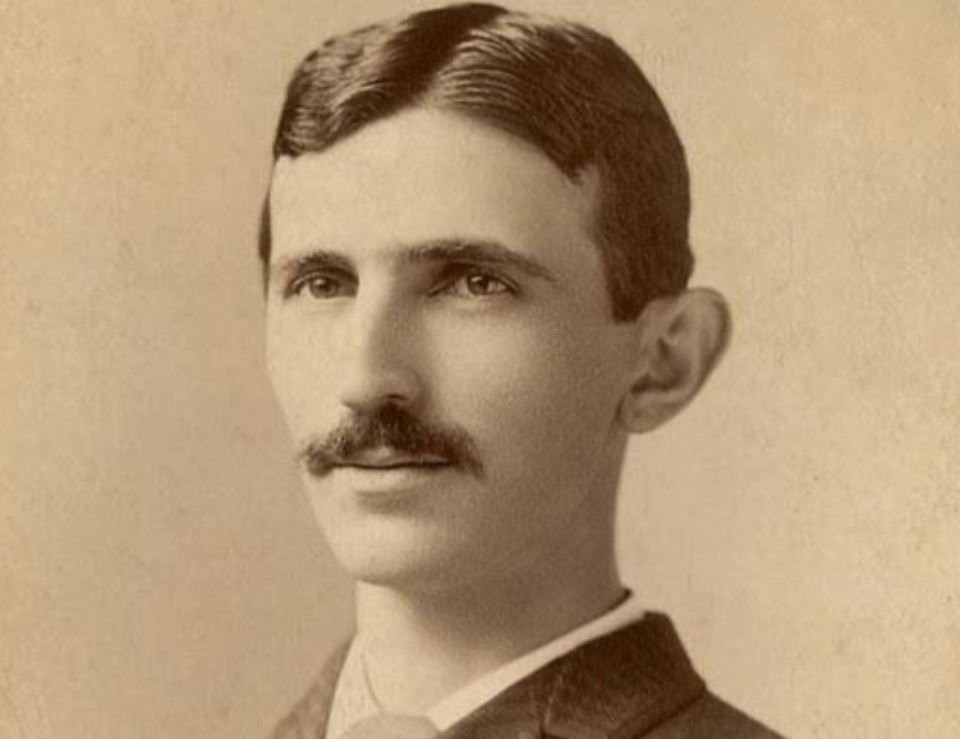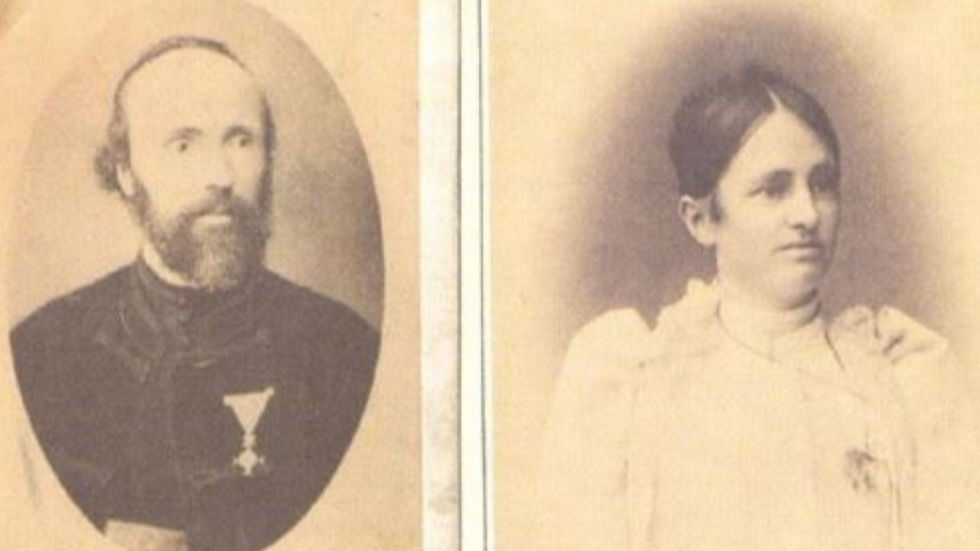
Nikola Tesla was a genius inventor, engineer, and notorious eccentric born on July 10, 1856 in Smiljan, Croatia. Without his alternating current, our lives would not be the same as they are.
His education began in his native Smiljan where he attended the local primary school and was taught German, arithmetic and religion, after which he attended the preparatory primary school and middle school in Gospić. After Gospić he moved to Rakovac in Karlovac where he finished secondary school (the Higher Real Gymnasium).

He enrolled in the Austrian Polytechnic School in Graz with a scholarship from the Military Frontier, but after his scholarship was revoked due to the demilitarization of the Military Frontier, he was not able to finish his second year and he began to play cards and gamble to compensate for the financial loss, but in the end he gave up his studies before his third year.
He worked for a short time in Maribor and after his father died in 1879, he worked in the secondary school (Real Gymnasium) in Gospić. In 1880 he tried to enrol at a university in Prague but failed, and a year later he found work in Budapest on the construction of the first telephone exchange.
Although I have to thank my mother for my inventiveness, the exercises that my father gave me were very helpful. They contained a multitude of tasks, e.g. guessing other people’s thoughts, detecting various errors or expressions, repeating long sentences or mental calculation. These daily exercises that had strengthened my memory and reason, and in particular helped me develop critical thinking, were undoubtedly very useful.
My mother came from one of the oldest families of this region, and we had invention running in our blood. Both her father and her grandfather invented many appliances for domestic, agriculture and other purposes. Indeed she was a great and extremely capable woman, brave and sure-footed, who rode the storms of her life and learned from those experiences. […] My mother was a first-class inventor who, I believe, would have achieved a lot if only she had not lived so far from modern life and the many opportunities it offered.

She invented and developed many devices. She wove beautiful threads that she spun herself. She had even sown seeds, cultivated plants and separated the fibres from them. She worked tirelessly, from dawn until late at night, and much of the clothes we wore and the furniture we had in the house were handmade by her. Past the age of 60 her fingers were still so skilled that she could tie three knots with an eyelash.
Nikola Tesla
Tesla worked for the Continental Edison Company in Paris, and in 1883 he constructed his first induction motor model in Strasbourg. After returning to Paris, Tesla received a recommendation from Charles Batchelor and moved to New York in 1884, where he was employed at Edison’s company. After a misunderstanding with Edison, Tesla left the company and founded his own in 1885, the Tesla Electric & Manufacturing Company.
His company went bankrupt a year later and he had to do manual labour to survive. In 1887 Tesla founded the Tesla Electric Company and patented the following: the polyphase transmission of electricity, induction motor, generators and transformers. A year later, in 1888, Tesla entered into a partnership with George Westinghouse. He sold him patents for alternating current products for a million dollars, but only received USD 60,000 (as listed in some sources).
In 1889 he went back to Europe and visited his native Lika. This was his first trip to Europe since moving to the United States. In 1890 he began to research high frequency current and a year later he developed the Tesla coil (transformer). His second visit to Europe was in 1892 for his mother's funeral and at the time he also visited other European cities: London, Paris, Zagreb, Budapest and Belgrade. Tesla showcased the benefits of alternating current at the 1893 Chicago fair dedicated to achievements in electrical engineering. His laboratory was destroyed in 1895 so he was not able to publish his discovery of electrons and x-rays.
The door opens up and out steps a tall figure–over 6 feet tall-gaunt but erect. It approaches slowly, stately. You become conscious at once that you are face to face with a personality of a high order. A winning smile from piercing light blue grey eyes, set in extraordinary deep sockets, fascinates you and makes you feel at once at home. You are guided into an office immaculate in orderliness. Not a speck of dust is to be seen. No papers litter the desk, everything just so.
Dressed in a dark frock coat, he is entirely devoid of all jewellery. No ring, stickpin, or even watch-chain can be seen. Tesla speaks a very high almost falsetto voice. He speaks quickly and very convincingly. After he speaks you find it difficult to take your eyes off his own. Only when he speaks to others do you have a chance to study his head, predominant of which is a very high forehead with a bulge between the eyes – the never failing sign of an exceptional intelligence. Then the long, well-shaped nose, proclaiming the scientist.
Hugo Gernsback - Nikola Tesla, The Man
In 1896 the hydro-electric power plant on Niagara Falls which used Tesla’s AC patents was put in operation. Tesla was also the first to design wireless power transfer and in 1898 he demonstrated his remote control boat. He continued to research high frequency and high voltage currents and in 1899 he built a laboratory in Colorado Springs where he experimented with these currents. In 1900 he began to work on the World Wireless Broadcasting System on Long Island which he never finished because J. P. Morgan took away his funding. Tesla continued to work on his inventions and in 1907 he developed a bladeless turbine which he tested a year later. He pursued inventions related to mechanical engineering from 1910 to 1922.
In 1919 he published his autobiography, “My Inventions”. Tesla continued to patent various inventions such as vacuum patents, vertical take-off aircraft, etc. He also tried to improve the production process of sulphur, iron and copper.

In 1917 he was awarded the Edison Medal (the highest award of the American Institute of Electrical Engineers), and in 1926 he received an honorary doctorate from the University of Zagreb. In 1937 he received an honorary doctorate from the Austrian Polytechnic School in Graz. Tesla spent most of his life in hotels where he also died. He died aged 86 on 7 January 1943 in New York, in room 3327 on the 33rd floor of the New Yorker hotel.
There are an endless number of “fact” posts about Nikola Tesla, but they all regurgitate the same things, like his fear of pearls, his obsession with the number 3, and that he moved to New York City with only 4 cents in his pocket.
Rarely does anyone touch on his life in Croatia. We dug through Croatian language resources to uncover a few fun facts about Tesla that you may not know, his life in Croatia, and how his big brain helped make Croatia better.
The facts are these…
1. How Nikola Tesla got his name
According to some findings, Tesla wrote about the origin of his Croatian surname in his diary. He stated that the surname Tesla is actually his grandfather’s nickname.
A tesla was a carpenter’s carving tool similar to a wide ax. Since his grandfather had protruding front teeth, people gave him the nickname Tesla. As a result, Tesla was adopted as a surname that was passed on to his children.
2. Tesla passed on the arts
In 1870 after Tesla finished his 3rd year of gimnazija (secondary school) in Gospić, his parents sent him to higher secondary school in Rakovac. There, he lived with his aunt Stanka and her husband Danilo, a retired major of the Austrian army.
Stanka tried to get Tesla interested in music and art history. While Tesla had great hearing and very sensitive ears, he simply wasn’t interested in music.
3. Tesla brought home cholera
After graduating from gimnazija, Tesla returned to his parents’ home in Gospić. His father didn’t want him to return due to a cholera infection that plagued the Lika area at the time.
Tesla’s father’s concerns turned out to be legitimate because Tesla became infected with cholera. He was stuck in bed for almost 9 months. He was often sick as a child as well and he was once absent from school for 2 months due to sickness.
4. Tesla found his destiny in high school
Nikola Tesla stated that he became interested in electrical engineering thanks to his high school physics professor, Martin Sekulić. Although his father wanted him to be a priest, he was impressed by his professor, who was an excellent experimenter and constructor.
Tesla was very excited by his professor’s experiments. He was especially intrigued with construction in the shape of a freely rotatable bulb that spun rapidly when connected to a static machine.
5. Tesla worked too hard
When Tesla enrolled in a polytechnic school in Graz, Austria, the dean wrote to his father. He praised Nikola Tesla as “a star of the first magnitude”.
Despite this praise, the dean thought Tesla was working too hard so he warned his father that he should slow down. His hard work began endangering his health, so the dean told his father that Tesla should drop out of school to save his health.
6. Tesla unclogged a fire hose as a child
Tesla was an ingenious problem-solver, even as early as elementary school.
When he was a child, there was a gathering in Gospić when a new fire hose was put into operation. During the ceremony, the hose became clogged. Tesla realized on his own that the problem was with the supply pipe coming from the river. He took off his shoes, stepped into the river, and unclogged the pipe himself. The new fire hose resumed working immediately.
7. Thanks to Tesla, Šibenik was the first electrified city in the world
On August 28, 1895, Šibenik became the first city in the world with a system of production, transmission, and local distribution of Tesla’s alternating current. This system enabled Šibenik to have the first electric alternating current street lighting. It was the beginning of Croatia’s modern electrification, all thanks to Nikola Tesla.
The alternating current was produced in the hydro-power plant Jaruga, the first and oldest electric power plant in Europe and the second in the world. Jaruga is situated on the river of Krka and its electricity is produced from renewable sources.
It is very appropriate that the world’s first city with electricity was Šibenik, a mere 160 kilometers from Gospić where Tesla grew up.
Both Serbia and Croatia nowadays are glad to assimilate him and make him some sort of a spokesperson for what those countries mean to the world.
Lying on his deathbed at the age of 86 in a hotel room in New York in 1943 Tesla perhaps reflected on his successes and thought about his family, childhood and his homeland. He was certainly proud of where he came from, as he wrote in 1936: “Thank you very much for your much-appreciated greetings and honors; I am equally proud of my Serb origin and my Croat homeland. Long live all Yugoslavs.”
And in the case of Tesla, it’s probably the most correct that he belongs to the whole world. Tesla’s inventions paved the way for modern society, and he has left an indelible mark on global society and culture.
The last words of Nikola Tesla: “All these years that I had spent in the service of mankind brought me nothing but insults and humiliation”
Comments